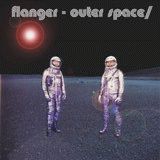 What if Tito Puente, Kraftwerk and electric Miles Davis had jammed ...what would that have sounded like? German electronic duo BerndFriedmann (aka Burnt Friedman) and Uwe Schmidt (Atom Heart, SeøorCoconut, etc.) may provide the answer with their Flanger collaboration,this being the third album in just a few years for Ninja Tune. Theirmusic is thoroughly jazz - warm, spacious, latino jazz - where everysound glows with clarity and every song comfortably glides over theeardrums, even when it's frantic. Vibes, electric and upright basses,guitar, synth, organ and some saxophone and vocoded phrases provide thepalette, framed within often complex and rapid rhythmic layers. It's aninternational affair all around with many live players recorded inSantiago, Copenhagen and Cologne, some track titles in French, Spanishand German, and the album title inspired by an essay by British sci-fiauthor J. G. Ballard. Uwe and Burnt seem to enjoy obscuring the linebetween what is programmed and what is 'played', only revealing thedigital enhancements and editing here and there, when they choose to.Not that it really matters mind you. The all important question is'does it have soul?' and the answer is a resounding 'yes'. It's anotherstellar 46 and 1/2 minutes worth of Flanger, more focused than ever.
What if Tito Puente, Kraftwerk and electric Miles Davis had jammed ...what would that have sounded like? German electronic duo BerndFriedmann (aka Burnt Friedman) and Uwe Schmidt (Atom Heart, SeøorCoconut, etc.) may provide the answer with their Flanger collaboration,this being the third album in just a few years for Ninja Tune. Theirmusic is thoroughly jazz - warm, spacious, latino jazz - where everysound glows with clarity and every song comfortably glides over theeardrums, even when it's frantic. Vibes, electric and upright basses,guitar, synth, organ and some saxophone and vocoded phrases provide thepalette, framed within often complex and rapid rhythmic layers. It's aninternational affair all around with many live players recorded inSantiago, Copenhagen and Cologne, some track titles in French, Spanishand German, and the album title inspired by an essay by British sci-fiauthor J. G. Ballard. Uwe and Burnt seem to enjoy obscuring the linebetween what is programmed and what is 'played', only revealing thedigital enhancements and editing here and there, when they choose to.Not that it really matters mind you. The all important question is'does it have soul?' and the answer is a resounding 'yes'. It's anotherstellar 46 and 1/2 minutes worth of Flanger, more focused than ever.
samples:



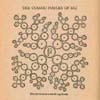 No, it's not a much-needed tribute to the KLF/JAMMs, it's another 2xCDcollection of electronic music from friends of a musician who runs hisown label. It might not be as varied or densely packed like aTigerbeat6 comp or thematically tied as a Morr comp, but it doescontain some fine moments of both label-promoting and friend-promoting.Hrvatski's guitar and click "Lullaby" contribution reminds me all toowell that there aren't enough Hrvatski albums in the world, MikeParadinas' alias Kid Spatula serves up a dish tastier than any Mu-Ziqrelease I own, and the thoroughly entertaining collage of illegal hiphop samples, "Turntable Savage" by Hellfish. However, there are a fewvery weak spots: like the Vincent Gallo-lite contribution by Dykehouseand the obvious oversampling of Coil's "Hellraiser Themes" in thedrum-and-bass-by numbers "Defluxion" by Venetian Snares or theover-predictable, skippable Tusken Raiders track, "Pansy". In allhonesty, this collection would have probably been much more noteworthyif released in 1997. In the end I'm left affirmed by my affection forElectric Company and my interest in whoever this Joseph Nothingcharacter is. Must research deeper,...
No, it's not a much-needed tribute to the KLF/JAMMs, it's another 2xCDcollection of electronic music from friends of a musician who runs hisown label. It might not be as varied or densely packed like aTigerbeat6 comp or thematically tied as a Morr comp, but it doescontain some fine moments of both label-promoting and friend-promoting.Hrvatski's guitar and click "Lullaby" contribution reminds me all toowell that there aren't enough Hrvatski albums in the world, MikeParadinas' alias Kid Spatula serves up a dish tastier than any Mu-Ziqrelease I own, and the thoroughly entertaining collage of illegal hiphop samples, "Turntable Savage" by Hellfish. However, there are a fewvery weak spots: like the Vincent Gallo-lite contribution by Dykehouseand the obvious oversampling of Coil's "Hellraiser Themes" in thedrum-and-bass-by numbers "Defluxion" by Venetian Snares or theover-predictable, skippable Tusken Raiders track, "Pansy". In allhonesty, this collection would have probably been much more noteworthyif released in 1997. In the end I'm left affirmed by my affection forElectric Company and my interest in whoever this Joseph Nothingcharacter is. Must research deeper,...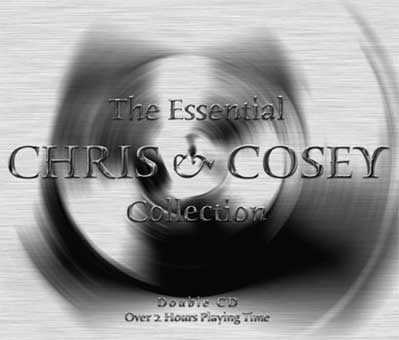 Chris and Cosey - like their only real peers, Coil - are a band whose ideas have been mercilessly pruned from a succession of increasingly astounding albums by all sorts of different folk, whose tenacious influence is similar to the ghost in 'The Haunting of Hill House' - barely seen, but profoundly felt.
Chris and Cosey - like their only real peers, Coil - are a band whose ideas have been mercilessly pruned from a succession of increasingly astounding albums by all sorts of different folk, whose tenacious influence is similar to the ghost in 'The Haunting of Hill House' - barely seen, but profoundly felt.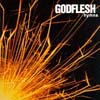 A few months after Earache released a 2-disc retrospective ("In AllLanguages"), Godflesh is back on a new label (Music For Nations/KochRecords) with a record of all-new material, a new band member(ex-Swans, ex-Prong Ted Parsons, who did live drums on the "Songs ofLove and Hate" tour is now a full time 'member') and anotherprogression in sound. While in 1999 Broadrick and co. moved to a more'electronic' dub-ish sound, with heavy use of drum machines and somesynth-work on their album "Us & Them", this new record sees themgoing back to the mostly guitar-based work they did early in theircareer. I don't know how hard it was to make this record for the band,but it is worth mentioning that bassist G.C. Green left Godflesh soonafter the release of this record. The main difference between thisrecord and the early stuff is Parsons' drumming, which gives "Hymns" amore open, spacious feel than say, the claustrophobic "Streetcleaner".Which is not to say that this is light record in any way -- if that'syour worry, don't sweat it, when the Black Sabbath-like "Voidhead" andit's outro/bridge of "why am I such a void?" or the absolutely crushing"Antihuman" crawls out of your speakers, there can be no doubt thatthis album is still heavier than almost anything else you heard thisyear. Broadrick has really made good progress vocally, and variety inhis vocals is a high point of this disc; many of the tracks have clean(but unintelligible) vocals. While guitar pyrotechnics was never whatGodflesh was primarily about, if you're a fan of heavy guitar, you'llget your money's worth on this disc.
A few months after Earache released a 2-disc retrospective ("In AllLanguages"), Godflesh is back on a new label (Music For Nations/KochRecords) with a record of all-new material, a new band member(ex-Swans, ex-Prong Ted Parsons, who did live drums on the "Songs ofLove and Hate" tour is now a full time 'member') and anotherprogression in sound. While in 1999 Broadrick and co. moved to a more'electronic' dub-ish sound, with heavy use of drum machines and somesynth-work on their album "Us & Them", this new record sees themgoing back to the mostly guitar-based work they did early in theircareer. I don't know how hard it was to make this record for the band,but it is worth mentioning that bassist G.C. Green left Godflesh soonafter the release of this record. The main difference between thisrecord and the early stuff is Parsons' drumming, which gives "Hymns" amore open, spacious feel than say, the claustrophobic "Streetcleaner".Which is not to say that this is light record in any way -- if that'syour worry, don't sweat it, when the Black Sabbath-like "Voidhead" andit's outro/bridge of "why am I such a void?" or the absolutely crushing"Antihuman" crawls out of your speakers, there can be no doubt thatthis album is still heavier than almost anything else you heard thisyear. Broadrick has really made good progress vocally, and variety inhis vocals is a high point of this disc; many of the tracks have clean(but unintelligible) vocals. While guitar pyrotechnics was never whatGodflesh was primarily about, if you're a fan of heavy guitar, you'llget your money's worth on this disc. Finally... Ant-Zen has returned to form. Or, I should say Cold MeatIndustry by proxy of Ant-Zen, since Azure Skies is a new projectcombining both males (or just one? I'm not too sure) of Sanctum andboth Durling brothers of Mental Destruction, two CMI mainstays.
Finally... Ant-Zen has returned to form. Or, I should say Cold MeatIndustry by proxy of Ant-Zen, since Azure Skies is a new projectcombining both males (or just one? I'm not too sure) of Sanctum andboth Durling brothers of Mental Destruction, two CMI mainstays.  Two years in the making, Michael Gira (SWANS, The Angels of Light) andDan Matz (Windsor for the Derby, The Birdwatcher) casually created andrecorded a dozen songs together in the relaxed setting of Matz's homes.Both men are simply credited with various instruments and vocals (plusengineering by Matz) and generally alternate lead vocals track to tracksave for a lone instrumental. The instrumentation is actually quiteextensive, approaching the ornate fleshing out of an Angels album:acoustic and electric guitars, bass guitar, organ, piano, synth,drums/percussion, drum machine, harmonica, banjo, a few samples andsome guitar by James Plotkin and background vocals by Anna Neighbor. Ifyou're coming to this disc via Gira and/or Matz's other endeavors, youwon't be surprised but will probably be as pleased with the results asI am. These are 'simple', spontaneous 'pop' songs as affected byAmericana as they are the avant-garde. And the pair's voices, poetryand basic song writing skills and styles complement one another well.The sound and feel is mostly slow and subdued, the mood in varyingdegrees of what I like to call 'uplifting melancholy'. Brief commentson a handful of tracks: "Pacing the Locks" beautifully mourns thepassing of time, "Is/Was" becomes soaked in shimmering synth bath andbell tones, "Lines" is pretty pop steeped in blue grass roots, "BrownEyes" and "Waiting Beside Viragio" are sparse, seemingly solo lovesongs, "Forcing Mary" will nod your head with driving guitar stabs and"Sunflower" is the peculiar instrumental, a droning hum with sprinklesof piano, guitar and whistling. Though I'm not (yet) as taken with"What We Did" start to finish as I am The Angels of Light's "NewMother" and "How I Loved You", I'm still more than happy with what theydid. Gira is currently on tour with The Angels of Light in NorthAmerica through mid December.
Two years in the making, Michael Gira (SWANS, The Angels of Light) andDan Matz (Windsor for the Derby, The Birdwatcher) casually created andrecorded a dozen songs together in the relaxed setting of Matz's homes.Both men are simply credited with various instruments and vocals (plusengineering by Matz) and generally alternate lead vocals track to tracksave for a lone instrumental. The instrumentation is actually quiteextensive, approaching the ornate fleshing out of an Angels album:acoustic and electric guitars, bass guitar, organ, piano, synth,drums/percussion, drum machine, harmonica, banjo, a few samples andsome guitar by James Plotkin and background vocals by Anna Neighbor. Ifyou're coming to this disc via Gira and/or Matz's other endeavors, youwon't be surprised but will probably be as pleased with the results asI am. These are 'simple', spontaneous 'pop' songs as affected byAmericana as they are the avant-garde. And the pair's voices, poetryand basic song writing skills and styles complement one another well.The sound and feel is mostly slow and subdued, the mood in varyingdegrees of what I like to call 'uplifting melancholy'. Brief commentson a handful of tracks: "Pacing the Locks" beautifully mourns thepassing of time, "Is/Was" becomes soaked in shimmering synth bath andbell tones, "Lines" is pretty pop steeped in blue grass roots, "BrownEyes" and "Waiting Beside Viragio" are sparse, seemingly solo lovesongs, "Forcing Mary" will nod your head with driving guitar stabs and"Sunflower" is the peculiar instrumental, a droning hum with sprinklesof piano, guitar and whistling. Though I'm not (yet) as taken with"What We Did" start to finish as I am The Angels of Light's "NewMother" and "How I Loved You", I'm still more than happy with what theydid. Gira is currently on tour with The Angels of Light in NorthAmerica through mid December.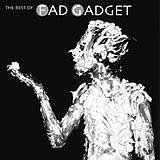 If you own any records from The Faint, Ladytron, Fisherspooner, I am Spoonbender, Adult, or G.D. Luxxe, owning no Fad Gadget albums is completely unacceptable. Mute began releasing Fad Gadget (their first signing in fact) back in 1979, and over the course of four full-length albums, Frank Tovey managed to firmly establish electronic music as a new form of punk, combining abrasive synths, punchy drum machines, the occasional vibrophone or other organic instruments, and clever lyrics.
If you own any records from The Faint, Ladytron, Fisherspooner, I am Spoonbender, Adult, or G.D. Luxxe, owning no Fad Gadget albums is completely unacceptable. Mute began releasing Fad Gadget (their first signing in fact) back in 1979, and over the course of four full-length albums, Frank Tovey managed to firmly establish electronic music as a new form of punk, combining abrasive synths, punchy drum machines, the occasional vibrophone or other organic instruments, and clever lyrics. 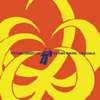 For their Warp Records debut, Antipop present a 7 track EP that's donespinning in less than 17 minutes. Warp may seem like a strange placefor an MC trio to be, but APC's hip hop is as electronic and forwardthinking as anything else on the label. NYC's Beans, Priest and Sayidfastidiously flow mile a minute rhymes, as always, and are as involvedin the sparse yet phat production as producer/engineer/arranger/mixerEarl Blaize. "Tuff Gong" gets right up in your face quick, Sayidletting you know within the minute that he "have the need to tell whatI see". "Splinter" is as close as you'll get to verse chorus verse butlike "Vector", it's a bit too laden with annoying synth notes. Moog andsynth lines help propel the instrumental future funk groove of"Dystopian Disco Force". In "39303," Priest testifies, "I write like aman who can't read / feelin' the need / to seize his mind of reason / Ispit treason / MCs in season / vets freezin' / I rap like there'snothin' left to believe in / clumsily uneven," seconds before his voiceis panned to one channel and digital gurgles fill the opposite one.Next, "Pit," disorients with 2 minutes worth of veering tones, off/onbeeps and ping pong ball percussion, then "Perpendicular" adds another2 minutes of tasty piano and atmosphere enhanced hip hop beats. Thisdisc is all over the place, much like an APC album, but it's all themore obvious in such a short time span. And unfortunately, I'd say only4 tracks are really necessary (but hey, it's only ~$7) so here'slooking forward to the debut album for Warp set to drop early nextyear. In the meantime, get "Tragic Epilogue" and "Shopping CartsCrashing" if'n you don't already have 'em.
For their Warp Records debut, Antipop present a 7 track EP that's donespinning in less than 17 minutes. Warp may seem like a strange placefor an MC trio to be, but APC's hip hop is as electronic and forwardthinking as anything else on the label. NYC's Beans, Priest and Sayidfastidiously flow mile a minute rhymes, as always, and are as involvedin the sparse yet phat production as producer/engineer/arranger/mixerEarl Blaize. "Tuff Gong" gets right up in your face quick, Sayidletting you know within the minute that he "have the need to tell whatI see". "Splinter" is as close as you'll get to verse chorus verse butlike "Vector", it's a bit too laden with annoying synth notes. Moog andsynth lines help propel the instrumental future funk groove of"Dystopian Disco Force". In "39303," Priest testifies, "I write like aman who can't read / feelin' the need / to seize his mind of reason / Ispit treason / MCs in season / vets freezin' / I rap like there'snothin' left to believe in / clumsily uneven," seconds before his voiceis panned to one channel and digital gurgles fill the opposite one.Next, "Pit," disorients with 2 minutes worth of veering tones, off/onbeeps and ping pong ball percussion, then "Perpendicular" adds another2 minutes of tasty piano and atmosphere enhanced hip hop beats. Thisdisc is all over the place, much like an APC album, but it's all themore obvious in such a short time span. And unfortunately, I'd say only4 tracks are really necessary (but hey, it's only ~$7) so here'slooking forward to the debut album for Warp set to drop early nextyear. In the meantime, get "Tragic Epilogue" and "Shopping CartsCrashing" if'n you don't already have 'em. The fourth full-length studio album from this English quartet is boththeir most vocal and most structured release to date, focusing moresoon songcraft and development than ever before. Fear not, however, asthere's still a large amount of improvisational influences and playfulfuckery on nearly everything, including sounds of the bathtub, cellularphones, and kitchen utensils alongside the intentionally mis-playedstandard rock instruments, classical and jazz wind instruments,strings, accordion, and numerous percussion tools. If there's one thingsmoking pot teaches you, it's how to become a craftsman (how to makethe best bong out of a melon, etc,...) and I have always consideredVolcano the Bear to be a crafty group of lads. Over the few releasesthey've had, it's clearly visible how the lot is increasinglyharnessing that craftmanship into a more organized, bridled chaos. Onceagain, the group recorded with Kev Reverb — once described as "a tenfoot tall cowboy with sunglasses, dressed all in black and possessing avoice like The Voice Of DOOM" — who runs an appropriately named'Memphis studios' out of Leicester, UK. The album contains punchdrunksurrealistic singalongs like the opener, "Hairy Queen" and parts of"Seeker" as well as lengthy drawn-out mostly instrumentaleverything-and-the-kitchen-sink pieces like the title track, withsuggestive hints of traveling minstrals in the album's closer, "I amthe Mould". If I could recommend any album to aquire and memorize onlyto bring to your school's art class only to play and sing along withand confuse the fuck out of those "artistes," this would be it. 'FiveHundred Boy Piano' is their second release for Steven Stapleton'sUnited Dairies label, and features artwork from each of the members aswell as Stapleton, himself.
The fourth full-length studio album from this English quartet is boththeir most vocal and most structured release to date, focusing moresoon songcraft and development than ever before. Fear not, however, asthere's still a large amount of improvisational influences and playfulfuckery on nearly everything, including sounds of the bathtub, cellularphones, and kitchen utensils alongside the intentionally mis-playedstandard rock instruments, classical and jazz wind instruments,strings, accordion, and numerous percussion tools. If there's one thingsmoking pot teaches you, it's how to become a craftsman (how to makethe best bong out of a melon, etc,...) and I have always consideredVolcano the Bear to be a crafty group of lads. Over the few releasesthey've had, it's clearly visible how the lot is increasinglyharnessing that craftmanship into a more organized, bridled chaos. Onceagain, the group recorded with Kev Reverb — once described as "a tenfoot tall cowboy with sunglasses, dressed all in black and possessing avoice like The Voice Of DOOM" — who runs an appropriately named'Memphis studios' out of Leicester, UK. The album contains punchdrunksurrealistic singalongs like the opener, "Hairy Queen" and parts of"Seeker" as well as lengthy drawn-out mostly instrumentaleverything-and-the-kitchen-sink pieces like the title track, withsuggestive hints of traveling minstrals in the album's closer, "I amthe Mould". If I could recommend any album to aquire and memorize onlyto bring to your school's art class only to play and sing along withand confuse the fuck out of those "artistes," this would be it. 'FiveHundred Boy Piano' is their second release for Steven Stapleton'sUnited Dairies label, and features artwork from each of the members aswell as Stapleton, himself. The prolific, multi-instrumental and continually tasteful O'Rourke'slatest release appears to be following in the direction of last year's"Halfway To A Threeway" EP but with a slightly rougher edge. Althoughthe seven well-crafted tunes on "Insignificance" vary musically,drawing on 60's garage rock, 70's AM radio, a touch of tropicalia andalt-country with some damn fine pickin', they uphold the fundamentalsof a great pop record. Song topics seem to be about frustration andself-degradation with "It's All Downhill From Here", depravity on thedark "Get A Room" and the weight of triviality on the title track.Tongue-in-cheek titles such as "Memory Lame" and "Life Goes Off"further augment the unique lyrical content. The musicianship is nothingshort of complete. O'Rourke's choice guitar, bass, piano, Wurlitzer andvibraphone performances are consummated by a group of fine musiciansincluding Wilco's Jeff Tweedy, great simultaneous drumming on sometracks by Glenn Kotche and Tim Barnes , bassist Darin Gray, pedal steelfrom Ken Champion and cornet and sax from Chicago jazzers Rob Mazurekand Ken Vandermark. The disc's order of tunes flows nicely from startto finish, ending in a glitch frenzy, which may be the bridge to thelaptop oriented, soon-to-be-released "And I'm Happy..." disc. As with1999's "Eureka", you shouldn't have too much trouble spotting thisdisc's artwork on the wall of your local vendor.
The prolific, multi-instrumental and continually tasteful O'Rourke'slatest release appears to be following in the direction of last year's"Halfway To A Threeway" EP but with a slightly rougher edge. Althoughthe seven well-crafted tunes on "Insignificance" vary musically,drawing on 60's garage rock, 70's AM radio, a touch of tropicalia andalt-country with some damn fine pickin', they uphold the fundamentalsof a great pop record. Song topics seem to be about frustration andself-degradation with "It's All Downhill From Here", depravity on thedark "Get A Room" and the weight of triviality on the title track.Tongue-in-cheek titles such as "Memory Lame" and "Life Goes Off"further augment the unique lyrical content. The musicianship is nothingshort of complete. O'Rourke's choice guitar, bass, piano, Wurlitzer andvibraphone performances are consummated by a group of fine musiciansincluding Wilco's Jeff Tweedy, great simultaneous drumming on sometracks by Glenn Kotche and Tim Barnes , bassist Darin Gray, pedal steelfrom Ken Champion and cornet and sax from Chicago jazzers Rob Mazurekand Ken Vandermark. The disc's order of tunes flows nicely from startto finish, ending in a glitch frenzy, which may be the bridge to thelaptop oriented, soon-to-be-released "And I'm Happy..." disc. As with1999's "Eureka", you shouldn't have too much trouble spotting thisdisc's artwork on the wall of your local vendor.
